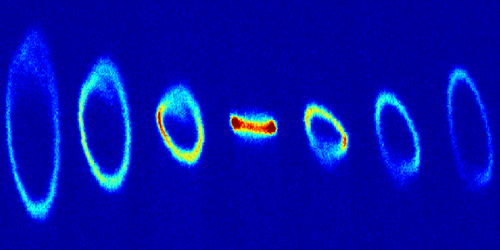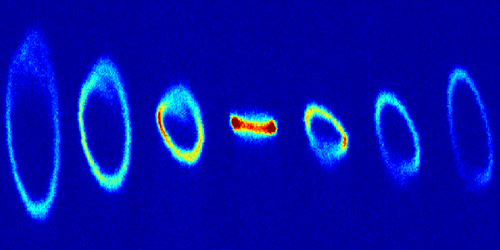Making Electron Pulses Shorter and Steadier
Short electron pulses play a central role in imaging techniques such as ultrafast electron diffraction, which can capture fleeting atomic dynamics inside semiconductors and other materials. To take increasingly faster snapshots, researchers have sought to produce shorter pulses. Using radio frequencies (rf), they have compressed pulse duration to less than 10 femtoseconds (fs). These rf schemes, however, are expensive and lead to timing “jitter,” fluctuations in the pulse timing that can smear out the temporal resolution. Now, two independent groups—the first led by Renkai Li of Tsinghua University and Emilio Nanni of SLAC National Accelerator Laboratory, the second by Dao Xiang of Shanghai Jiao Tong University—have demonstrated a cheaper method that compresses the electron pulses with terahertz, rather than rf, radiation, producing pulses that are both short and consistently timed.
The two groups produce electron pulses by illuminating a photocathode gun with a laser. As the electrons move through a cavity, terahertz radiation generated by the same laser accelerates electrons from the pulse tail and slows down those at the pulse head. As a result, the pulses are compressed from 100 to 30 fs. While this duration is longer than that achievable in rf schemes, the timing jitter of the pulses is considerably improved. Jitter occurs because, as an electron bunch moves down the cavity, it tends to drift in time with respect to the next bunch. Since the terahertz radiation is produced by the same laser that initializes the electron beam, the radiation and the bunch are synchronized. As the radiation compresses each electron bunch it also resets the bunch's timing. The technique improved timing jitter by more than twofold compared with rf schemes.
This research is published in Physical Review Letters.
–Sophia Chen
Sophia Chen is a freelance science writer based in Tucson, Arizona.
Correction (10 February 2020): The article was revised to correctly list the lead authors and their affiliations.





